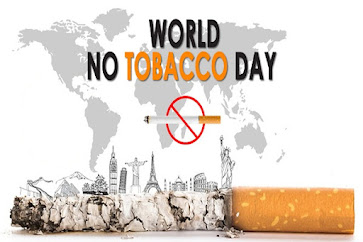The lungs are vital organs that we often take for granted, but they are susceptible to infections and injuries. Respiratory diseases, such as COPD, asthma, pneumonia, and tuberculosis, are major global health concerns, causing millions of deaths annually. Lung cancer is the deadliest cancer, and the recent COVID-19 pandemic has also had a significant impact on respiratory health. Poor air quality, both indoors and outdoors, contributes to these problems. Respiratory diseases rank among the top causes of death worldwide, with millions affected each year.
Lung cancer is the leading cause of cancer-related deaths worldwide, with 2.2 million new cases and 1.8 million deaths estimated in 2020. Despite advances in treatment, it remains highly fatal, with a global mortality incidence ratio of 0.85 in 2016 and five-year survival rates of only 10% to 20% in most countries.
The primary cause of lung cancer is tobacco smoking, with the risk correlating to the intensity and duration of smoking. High-income countries have higher incidence and mortality rates due to a longer history of smoking tolerance, but the global distribution is shifting as more smokers are in low- and middle-income countries. In addition to smoking, other factors contribute to lung cancer, including occupational carcinogens, domestic pollutants like radon, biomass fuel emissions, and outdoor air pollution. Genetic factors also play a role in individual susceptibility.
Asia is home to approximately 59% of the global population, and if the current trend of increasing smoking rates continues in the region, lung cancer rates are expected to rise as well. Notably, a significant proportion of lung cancer cases in Asia occur in individuals who have never smoked. In contrast to the United States and Europe, where 15% to 20% of women with lung cancer have never smoked, in Asia, this figure is much higher, ranging from 60% to 80%.
Lung cancer is a largely preventable disease, with the most significant risk factor being tobacco smoking. The World Health Organization (WHO) estimates that 1.3 billion people worldwide are current tobacco users. The variation in the incidence and mortality rates of lung cancer among countries is largely attributed to differences in the maturity of the tobacco epidemic, with much higher rates in countries with a high or very high health development index compared to those with a medium or low health development index.
There has been progress in reducing tobacco use globally, with a net reduction of 28.6 million smokers observed from 2000 to 2015. However, this decrease is primarily seen in the Americas and Europe, offset by an increase of 53.9 million smokers in the WHO African, Eastern Mediterranean, South-East Asian, and Western Pacific regions.
Efforts to control tobacco use are crucial on a global scale. The 2003 WHO Framework Convention on Tobacco Control has played a pivotal role in curtailing tobacco consumption, with 168 countries committing to implementing public health policies to reduce tobacco demand, decrease tobacco smoke exposure, regulate packaging and advertising, and educate the public. Multiple approaches have proven effective, including tax and price increases, packaging warnings, education, and smoke-free mandates.
In addition to tobacco control, environmental causes of lung cancer are also modifiable. Occupational regulations should ensure the safe production, sale, and use of known carcinogens. Research is needed to find ways to reduce exposure to domestic carcinogens, especially in regions that rely on biomass fuels for heating and cooking. Effective health policies should be developed and implemented to prevent exposure to lung carcinogens.
The optimal care for lung cancer involves a specialized multidisciplinary team to ensure access to effective and cost-efficient treatment. The diagnostic and staging processes are crucial for understanding the tumor's molecular characteristics and the extent of the disease, which in turn determine the intent and type of treatment. While computed tomography–positron emission tomography has greatly improved staging, its accessibility is not universal. Unfortunately, most new cases are diagnosed at advanced, incurable stages, highlighting the importance of early detection through low-dose computed tomography screening.
Treatment approaches for lung cancer vary based on the stage and characteristics of the disease:
Early-Stage Lung Cancer: When diagnosed at an early stage, lung cancer is potentially curable through surgery or ablative therapies like stereotactic radiotherapy. Some patients may benefit from chemotherapy after surgical resection.
Locally Advanced Lung Cancer: For locally advanced disease, the approach typically involves a combination of chemotherapy and radiotherapy, sometimes followed by adjuvant immunotherapy. Surgery may be considered in some cases.
Metastatic Lung Cancer: Metastatic lung cancer is not curable, but many patients can experience meaningful improvements in symptoms and prolonged survival through systemic treatments. Chemotherapy remains an option for patients with a good performance status. Targeted therapies, often in oral form. Immunotherapies, particularly immune checkpoint inhibitors, enhance the body's immune response against cancer cells by preventing them from escaping immune surveillance. The use of biomarkers helps identify subpopulations of patients who may benefit from specific therapies.
Palliative Care: Palliative care plays a crucial role in relieving distressing symptoms, such as difficulty breathing or airway obstruction, for patients with advanced lung cancer. Early referral to palliative care can significantly improve both the quality of life and overall survival.
Lung cancer treatment is highly dependent on the stage and molecular characteristics of the disease. Early detection through screening is essential for improving outcomes, and a multidisciplinary approach that includes surgery, radiation, chemotherapy, targeted therapies, and immunotherapies can offer patients the best chances of survival and symptom management.Controlling and eventually eliminating lung cancer requires comprehensive strategies that encompass prevention, early detection, treatment, and equitable access to healthcare. The primary focus should be on tobacco control and elimination, complemented by research-driven advances in screening, diagnostics, and treatment to improve outcomes for lung cancer patients globally.
Regards and Thanks,
Dr. (Prof)Rajendra T. Nanavare




Comments
Post a Comment